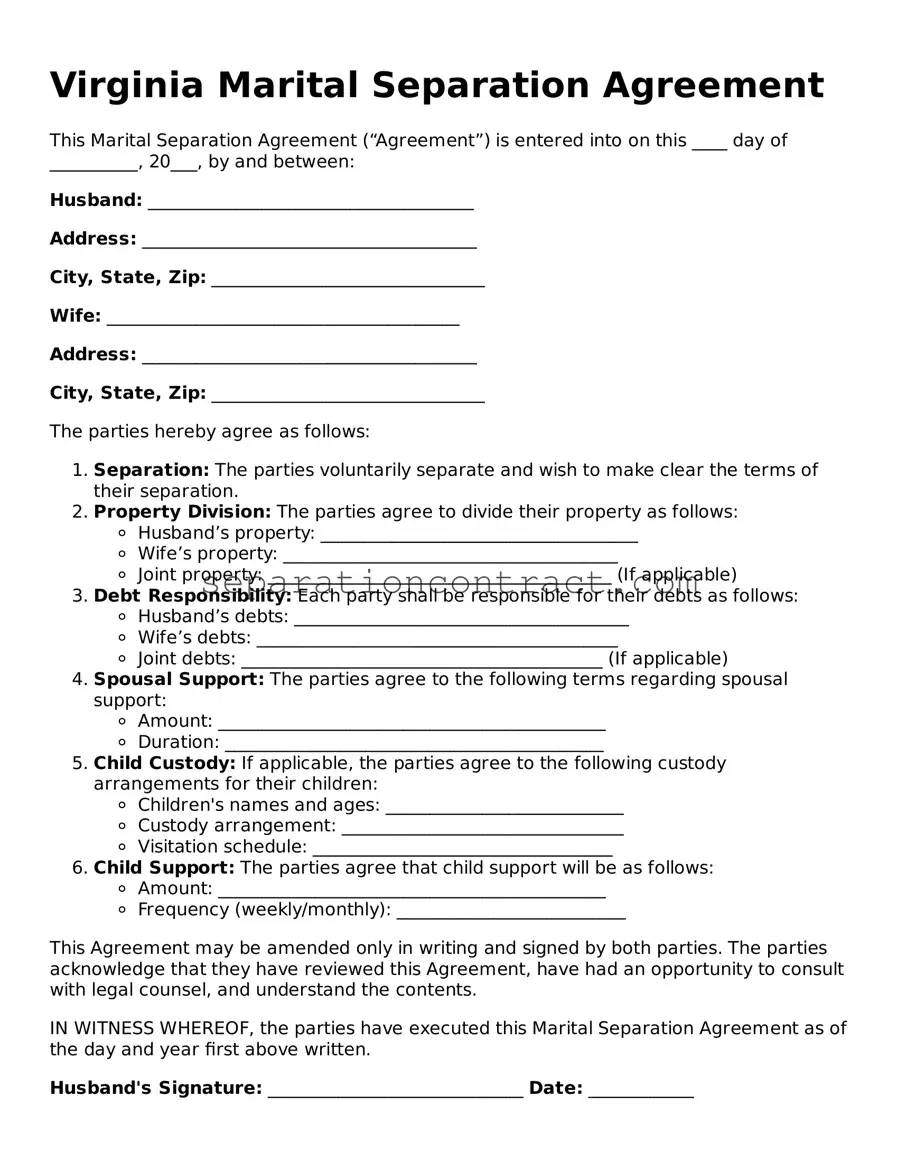Filling out the Virginia Marital Separation Agreement form can be a daunting task. Many people make common mistakes that can lead to confusion or even legal issues down the line. One frequent error is not fully understanding the terms of the agreement. It’s crucial to know what each section means and how it affects your rights and responsibilities.
Another mistake involves leaving sections blank. Each part of the form is designed to capture specific information. Omitting details can lead to misunderstandings between parties. Be thorough and ensure all relevant sections are completed.
Some individuals fail to discuss the terms with their spouse before submitting the agreement. Open communication can prevent disputes later. Both parties should agree on the terms to ensure a smoother process and reduce potential conflicts.
Additionally, people often overlook the importance of accurate financial disclosures. Listing income, expenses, and assets is essential for a fair agreement. Incomplete or incorrect financial information can lead to complications during divorce proceedings.
Another common mistake is not considering future needs. The agreement should account for potential changes in circumstances, such as job loss or changes in child custody. Planning for the future can help both parties adapt to new situations.
Some individuals also neglect to have the agreement reviewed by a legal professional. A lawyer can provide valuable insights and ensure that the document complies with Virginia laws. This step can save time and stress in the long run.
It’s also important to understand the implications of signing the agreement. Some individuals may not realize that once signed, the agreement is legally binding. This means that both parties must adhere to its terms unless modified by a court.
People sometimes forget to include a dispute resolution clause. This clause can outline how disagreements will be handled in the future, such as through mediation or arbitration. Having a plan in place can prevent conflicts from escalating.
Finally, failing to keep copies of the signed agreement is a mistake many make. It’s essential to retain copies for personal records and future reference. This ensures that both parties can refer back to the agreement if needed.
